Abstract In the past two years, the LED industry has experienced explosive growth and has become the target of various funds. However, it is unavoidable that the crazy expansion of China's LED industry is mainly concentrated in the low end of the substrate and chip, packaging and other industrial chains, while high-tech, high value-added high-end LED materials and...
In the past two years, the LED industry has experienced explosive growth and has become the target of various funds. However, it is unavoidable that the crazy expansion of China's LED industry is mainly concentrated in the low-end of the industrial chain such as substrate and chip, packaging, etc., while high-tech, high value-added high-end LED materials and epitaxy areas, domestic enterprises are rarely involved. The smooth entry into the high end of the industrial chain has become a key factor in determining the future development prospects of the domestic LED industry. What is encouraging to LED people is that at the beginning of this year, the country gave the LED industry a strong shot – the sapphire LED material epitaxy and chip technology won the National Science and Technology Progress Award. Technological innovation is the key to the competitiveness of LED companies in the future, and it is also the key to LED's breakthrough in industrial bottlenecks and industrial upgrading.
China's LED industry status
A typical LED device is shown in the following figure. An LED device layer having a low crystal defect density is usually grown on a substrate material by an epitaxial method, and a certain device shape and structure are obtained by a semiconductor manufacturing process such as photolithography, etching, sputtering, etc., and A good electrical contact film is formed, which is the LED chip. The LED chip is packaged to avoid damage to the LED chip, and to introduce electricity and derivate light to form a complete LED product.
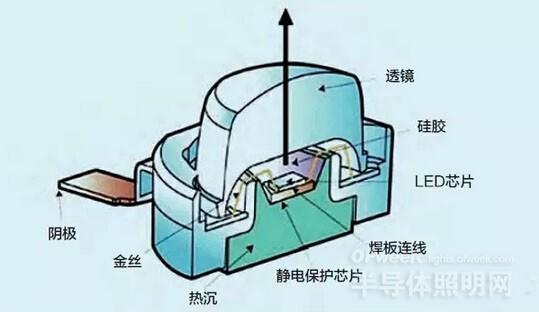
The LED industry chain mainly includes substrates, epitaxy, chips, packaging, and applications. As a concrete analysis, the key materials of LED products are concentrated on the substrate, epitaxial chip and packaging.
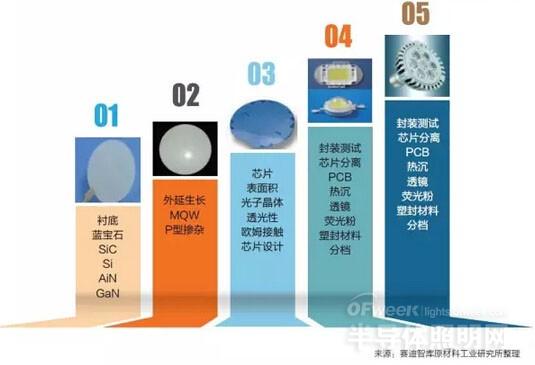
There are many LED substrate materials. The large-scale commercial LED substrate materials on the market are GaAs, sapphire and SiC, and Si substrate and GaN homogenous substrate have also become hot topics.
In the field of GaAs, China has a certain strength. The current substrate materials in Pulianghong and Huangguang LEDs have basically achieved localization, while the high-brightness and ultra-high-brightness red LED substrate materials mainly rely on imports, and still exist at international level. A certain gap.
The sapphire substrate material is widely used by domestic enterprises because of its mature production technology, good device quality, high stability, easy handling and cleaning. However, there are some problems with sapphire substrates. Firstly, the lattice mismatch and thermal stress mismatch between sapphire substrate and GaN epitaxial layer are large. At the same time, the thermal conductivity of sapphire is not very good, which will increase the heat dissipation cost of high power LED device package. .
In order to improve the thermal conductivity and electrical conductivity of the device, SiC and Si substrates have appeared. The thermal conductivity of the SiC substrate material is more than 10 times higher than that of the sapphire substrate. At the same time, the substrate does not need a current diffusion layer, so the light is not absorbed by the material of the current diffusion layer, which is beneficial to improve the light extraction efficiency of the chip, but Its manufacturing cost is very high, and the price of the product is almost 10 times that of the same size sapphire substrate. Si substrate material has high quality, large size, low material cost, mature processing technology, good electrical conductivity, thermal conductivity and thermal stability, but there is a huge lattice mismatch and heat loss between Si and GaN. At the same time, Si absorbs the visible light seriously, and the LED light-emitting efficiency is low.
In the past two years, China's growth of GaN epitaxial technology on Si substrates has been progressing rapidly, especially in the growth of GaN epitaxial on large-size Si substrates such as 6-inch and 8-inch, which can greatly reduce the manufacturing cost of LED chips. It seems that Si substrate technology is expected to achieve large-scale commercial use.
In addition, materials such as AlN and ZnO can also be used as substrates, and are still in the laboratory research stage.
The preparation technology of GaAs/AlGaInP/InP/GaP quaternary substrate materials for preparing red and yellow LEDs in China is relatively mature, and the gap with the international level is small. In the field of GaAs substrates, Zhongke Gallium, Zhongke Jingdian, Guorui Electronics, Shanghai Zhongke Jiapu, China Electronics Technology Group 46th Research Institute and other enterprises have achieved mass production of these products, especially Zhongke Gallium. Yinghe Zhongke Jingdian has a large market share in the domestic GaAs substrate field due to its outstanding product cost performance.
The performance indexes and yields of sapphire substrates, SiC substrates and GaN substrate materials used by Chinese enterprises in blue and white LEDs are still low, and there is a shortage of materials growth professionals. However, driven by the market and policy, many companies have begun to intervene or announce their involvement in the field of wideband gap substrates, gradually expanding capital investment and the introduction of related key technologies.
In the field of sapphire substrate materials, China's representative enterprises include Yuanliang Technology, Tongren Electronics, GCL Optoelectronics, Shangcheng Technology, Jixing New Materials, Phuket Optoelectronics, Crystal Optoelectronics, Yunnan Lanjing, Chongqing Silian Optoelectronics, Chengdu Dongjun, Guizhou Haotian, Jiujiang Celluloid, China Gallium Semiconductor, Harbin Institute of Technology Orient, Anhui Kang Blu-ray, Qingdao Jiaxing Jingdian, Shandong Tianyue, Shandong Yuanhong and so on.
In the field of SiC substrates, Cree in the United States has almost monopolized the global supply of high-quality SiC substrates, followed by Germany's SiCrystal, Japan's Nippon Steel and Japan's East Fiber-Dow Corning, and our company's strength is weak.
Epitaxial material
Epitaxy is the core of LED devices. The epitaxial material is composed of multiple layers of different materials. It requires uniform thickness of single layer and uniform distribution of chemical components, which puts very high requirements on epitaxial process control and equipment. The temperature field and airflow control involved in the epitaxial growth process directly affect the uniformity of local components and thickness in the LED chip. The most common method currently used is the MOCVD method. Because this link has high requirements for capital, technology and talents, the entry threshold is higher.
At present, compared with international manufacturers, in terms of epitaxial material growth technology and experience, there is a certain gap in luminous efficiency between high-power products and low-power products. From the material point of view, in the high-brightness and ultra-high-brightness products, due to the lower requirements of the AlGaInP epitaxial technology, there are many enterprises engaged in such epitaxial production in China, and the output is relatively high. As the main material of blue LED, GaN, driven by the huge lighting market potential, its epitaxial wafer output is increasing, and the growth rate is significantly higher than that of AlGaInP epitaxial products.
As the core MOCVD equipment in the production of epitaxial materials, the world's major manufacturers are Aixtron (about 60%-70% market share) and Vecco (about 30%-40% market share) in the United States. Other MOCVD manufacturers mainly include Japan's NIPPON Sanso and Nissin Electric. China's MOCVD equipment is basically imported.
By the end of 2013, there were about 1017 MOCVDs in China, and the number of MOCVDs produced and completed was nearly 60%, of which 85% were GaN-based MOCVD. In terms of technology and production technology, there is a big gap between domestic and foreign countries. Especially in the quaternary system and GaN system with good prospects, domestically produced MOCVD equipment can not meet the requirements of industrialization and basically rely on imports.
In 2012, the performance indicators of the first domestic 48-inch 2-inch MOCVD engineering prototype developed by the Institute of Semiconductors of the Chinese Academy of Sciences reached the level of similar international MOCVD equipment products, which means that the technical level of MOCVD equipment that has been restricting the development of China's LED industry has been achieved. A major breakthrough.
Chip material
At present, domestic enterprises and scientific research institutions have realized epitaxial growth of GaN materials on different substrates (Al2O3, Si, SiC, AlN), and have developed patterned substrate epitaxy, non-polar or semi-polar epitaxy, substrate transfer, Products and technologies such as laser lift-off, eutectic soldering, ITO electrodes, surface roughening, and photonic crystals.
China has also made great progress in improving internal quantum efficiency and external quantum efficiency. At present, AlGaN deep ultraviolet (260nm-400nm) light-emitting diodes and 1W LED blue light chips have been developed. The luminous efficiency of white LEDs exceeds 80lm/W, and a quaternary AlGaInP red light power LED device has been developed. The luminous efficiency is about 40lm/ W.
However, China's ultra-high-brightness chips and high-brightness blue-green chip products still need to be further improved. Domestic chips still rely mainly on imports.
Due to the close connection between the epitaxial wafer and the chip production process, most companies in the industry are engaged in the production of chip products while also engaged in the production of epitaxial wafers. As of the end of 2013, there were nearly 100 enterprises involved in LED epitaxy/chips in China (excluding Taiwan).
In the extension/chip segment, due to the successive launch of new projects in the past two years, the regional distribution has shown a trend of flowering and decentralized development. Among them, the number of enterprises in the Yangtze River Delta region exceeds 30, exceeding 1/3 of the total.
Preparation material
LED preparation materials mainly refer to photoresists, high-purity reagents, high-purity electron gases, targets and polishing materials that are required for LED production.
China's LED field photoresist is still in the early stage of industrialization. The domestically capable photoresists include UV negative photoresist, UV positive photoresist (G, I line adhesive) and TN-STN photoresist. Wait. However, high-end production photoresists also need to rely on imports.
In the field of high-purity reagents, the domestic industrialization technology level can basically meet the LED production requirements.
In the field of high-purity electronic gas, domestically produced 6N high-purity ammonia has been widely used in the LED industry, and has made certain progress, but there is still a big gap between the overall technical level and requirements of special electronic gas, and the high-end core technology and product market are still abroad. control.
In the field of targets, China's industrialization technology level and product quality have developed rapidly, and import substitution has basically been achieved. The outstanding problem is that the main raw materials of the target are still dependent on imports. In the field of polishing materials, China can basically produce polishing liquids for sapphire in the field of LEDs, polishing liquids for silicon and compound semiconductor substrate materials, and hydrosol nano-abrasives, etc., but other polishing liquids for CMP processes, core basic raw materials for polishing liquids, etc. Dependent on imports.
According to incomplete statistics, there are currently 31 companies engaged in photoresists, high-purity reagents, high-purity electron gases, targets and polishing materials in China, mainly in joint ventures and private enterprises. The enterprises are mainly distributed in the Yangtze River Delta and Beijing. The Bohai Sea region. Although the number of state-owned and state-owned holding companies is not as good as that of joint ventures and private enterprises, product sales revenue and employees are in an absolute advantage.
Deep in the low end of the industrial chain
In the short span of three years from 2010 to 2012, the LED chip capacity expanded more than 10 times, resulting in a serious overcapacity in the LED materials industry. In 2014, driven by the downstream application market, most LED materials companies improved overall, MOCVD capacity utilization rate rose to 52%, the operating rate rose to about 70%, and the average capacity utilization rate increased significantly compared with the previous two years.
With the improvement of the market, domestic LED leaders led by Sanan Optoelectronics and Huacan Optoelectronics have started a new round of expansion, and the new capacity has surpassed its original number of original organic units, and the future LED material production capacity. The problem of excess is still not optimistic. Overcapacity of LED materials has intensified disorderly competition among enterprises. Although the industry market continues to grow, overall profitability is declining, and price wars are intensifying. The price of LED chips has been greatly reduced, and some have even dropped by 50%. Small LED materials companies have sought mergers and acquisitions and cooperation, and even more have stopped production and are ready to withdraw from this field.
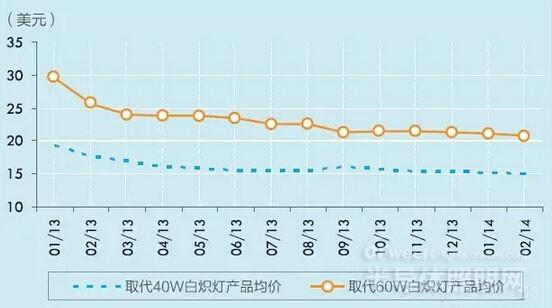
China is the world's largest LED application market, but the development of high-end LED and other fields is relatively lagging behind, and the production capacity is insufficient, which is far from meeting the market demand. Cree, Philips, Osram, Kyocera, Sumitomo Electric, Nichia and other foreign brand manufacturers have long been Occupy the domestic high-end market. In addition, the core technology of high-end LED materials is basically in the hands of European and American enterprises. Most domestic enterprises are at the low end of the industry, and it is difficult to gain the upper hand in competition with foreign companies. Moreover, the trend of homogenization competition in some areas began to appear, and the phenomenon of disrupting market order by sub-filling and malicious price reduction further weakened the market competitiveness of domestic enterprises, thus limiting the rapid development of the domestic LED material industry.
Patent barriers, technical blockade of foreign companies
LED is a technology-intensive industry. Japan and Europe and the United States have the strongest technical strength, mastering LED core patents, leading the development of the latest technology, occupying the high-end links of the industrial chain and value chain, and engaged in the production of high value-added products. The domestic patent application for LED materials is still mainly concentrated in the relatively mature products such as ordinary brightness or high-brightness red light and green LED, while the technology thresholds such as ultra-high brightness red light, GaN-based blue light and white light are relatively high. The number of applications is still small. Foreign companies use patent barriers to impose technical blockades on other regions and maintain their leading position.
Capital-driven, polarized pattern is increasingly obvious
The LED material industry is a capital-intensive industry. The investment intensity is large but the effect is slow. The enterprises are small, and the scale production capacity cannot keep up with the new development of the world technology. Only when the company continues to grow bigger and better, can it survive. Since 2013, the polarized pattern of LED materials enterprises has become increasingly obvious. Enterprises with scale and technological advantages are undoubtedly more successful. Leading companies in the LED materials industry have joined the new round of capacity expansion.
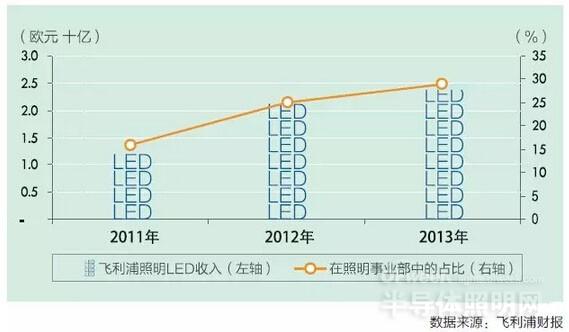
Talent is scarce, requires practical technology and management talents
Most of the LED material production equipment is imported from abroad. The price is expensive, the operation is complicated, and the maintenance cost is high. First, a strong engineering and technical talent team is needed. Secondly, the large investment scale also makes the market channel development, risk control and internal Management is the key to the success of LED materials companies. China's scientific research institutions and universities are not well integrated with industry, education and research. The practice of LED materials industry is not as good as that of enterprise technicians, lacking practical technology and management talents. After project introduction and project launch, they are faced with the risk of talent scarcity.
Guide the development of industrial high-tech
In the past two years, China's LED substrate and epitaxial industry have experienced a frenzied expansion period, blindly projecting and looting investment, and underestimating the high risk of the industry. As a result, the production capacity is seriously over-capacity, product prices continue to fall, and investors such as governments and enterprises lost heavily. In this regard, the competent authorities of the industry should maintain a clear-headed mind, strengthen industrial planning and coordination between regions, realize a national chess game, make overall considerations, promote synergy and interaction between the upstream and downstream of the industrial chain, form a good atmosphere for innovation, and reduce traffic, logistics and Communication costs. At the same time, the government should set up barriers to entry for substrates and chips, strictly limit blind expansion, prevent a new round of overcapacity, avoid investment mistakes and waste, and ensure the healthy development of the industry.
In addition, the LED material technology is constantly upgrading and changing. The government should strengthen guidance and avoid continuing to invest in the construction of low-end products, and the funds will be developed in the direction of high-end materials, OLED core technology products and core equipment that cannot be produced in China. Guide and focus on basic research and process technology research and development to promote long-term sustainable development of the industry.
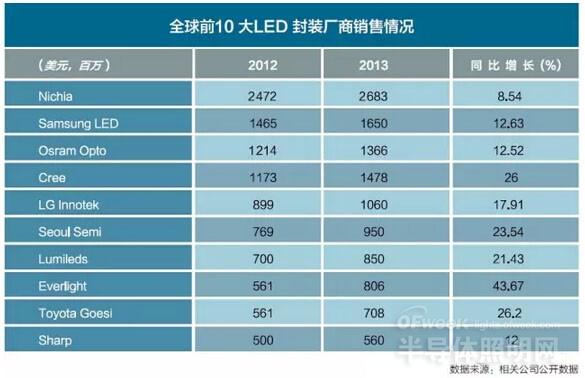
International experience shows that scale effect is an important factor affecting the competitiveness of enterprises. The development of LED materials industry should be based on the scale of large enterprises, the expansion of production lines and the improvement of industrial chain. Large enterprises achieve a competitive advantage by reducing the production cost and shortening the time to market by integrating the industrial chain. Therefore, the state should further increase support for leading enterprises and support the research and localization of key equipment and materials.
The LED materials industry is a capital- and technology-intensive industry. Its development must rely on the capital market. The government should actively guide and provide strong support in corporate financing. In addition, stock assets, land resources, and superior raw materials are prioritized to meet the needs of major project construction. Idle stock assets can be injected in the form of shares or allocations, and the related expenses of land resources are preferential. We will increase financial support for the early-stage cost of major projects and support for loan interest subsidies. Asset guarantee companies will give priority to credit guarantees for major project financing.
Resolutely implement differentiated strategies according to local conditions
In the process of developing the LED materials industry, local governments should implement differentiated strategies based on local industrial development characteristics and actual conditions. For regions that do not currently have the relevant LED material industry base, we should follow the development idea of ​​“grab position development†and take the emerging products and technologies such as AMOLED, SiC substrate materials and patterned substrates as the development orientation; The focus of the region is to continuously extend the industrial chain, improve the industrial chain layout, and enhance the industrial competitiveness to form the development of industrial clusters. For regions with unique geographical advantages, we can choose the idea of ​​“translocation development†to encourage leading enterprises or Enterprises jointly develop new products, such as explosion-proof LEDs in the mining area, and ultraviolet medical lighting and other emerging special applications.
Optimize services and improve the intermediary service system
Give full play to the government's organization and coordination role, build a platform for the supply and demand negotiation of bank-enterprise funds, establish a bank-enterprise relationship of coordinated development and benign interaction, and effectively solve the problem of asymmetry in the supply and demand of funds between banks and enterprises, and the smooth transmission mechanism of monetary policy. Encourage enterprises to accelerate their expansion through asset restructuring, acquisitions, mergers, and domestic and overseas listings. Strengthen mutual communication between banks and enterprises, and effectively guide financial institutions to increase credit capital investment. Improve government service levels. Effectively increase cross-departmental coordination services, further optimize service workflows, vigorously promote policy planning, timely release industry development information, and accelerate project approval progress. Coordinate and resolve the difficulties and problems in production and operation in a timely manner to help enterprises tide over the difficulties.
Improve the intermediary service system. Vigorously develop various intermediary organizations such as technology assessment, technical consultation, technical services, technology transfer, patent agency, scientific and technological information, investment and financing, personnel training, and legal services, actively build an industry development and exchange platform, and promote exchanges and cooperation between enterprises. Form a complete service guarantee system to provide convenient and efficient services for enterprises.
International cooperation to improve the technical capabilities of local enterprises
China has a weak foundation in the field of LED basic raw materials and key equipment. LED material enterprises, especially large enterprises with certain scales, should fully cooperate with foreign companies in all aspects, such as joint ventures, technology introduction, strategic cooperation, etc. to reduce material costs. To ensure the supply of key materials. At the same time, through the digestion and absorption of core technologies, we accumulate our own technical strength and complete independent innovation. Through the national science and technology project to carry out joint research, break through the upstream key materials and equipment bottlenecks, and master the initiative of development.
In addition, we encourage cooperation in industry, academia and research, strengthen the foundation of LED materials and forward-looking research, plan the technical route of the industry, and seize the commanding heights of the industry. Strengthen the analysis of existing patents to avoid technical risks and patent traps. At the same time, enterprises, enterprises and research institutions can also hold a group to warm up, through the combination of core technology patents and peripheral application patents, form an industrial alliance patent pool, and enhance the negotiation game ability with rivals.
Strive for policies and give full play to financing functions
Due to the large scale of investment in the LED materials industry, it has brought great financial pressure to enterprises. Therefore, enterprises should fully utilize the attractiveness of the industry itself, further integrate resources, closely maintain relationships with financial institutions and investors, and raise the platform for multi-channel development. Funds. According to the development needs of enterprises, refinancing through the capital market; in addition, guarantee funds or venture funds can be established to share risks for financial intervention and high-tech development of enterprises, mobilize the enthusiasm of the financial industry and enterprises to develop packaging equipment manufacturing industry, and to be the technical level of enterprises. The improvement and the expansion of the industry scale provide a strong financial guarantee.
As the country attaches great importance to the development of the LED materials industry, it will give certain support to strategic emerging industries in terms of policies and funds. Therefore, enterprises are required to actively strive for maximum capital and policy support on the basis of comprehensively understanding the various industrial policies and measures of the country and using existing policies; and set up special funds for tackling key equipment common technologies, basic technologies and key technologies. In the form of a special plan, focus on outstanding talents and effective resources to organize research. Source: CCID Research Center
Solar Street Light,Outdoor Solar Street Lights,Solar Light,Solar Street Lamp
China Searun Solar Solution Co., Ltd. , https://www.searunsolar.com
